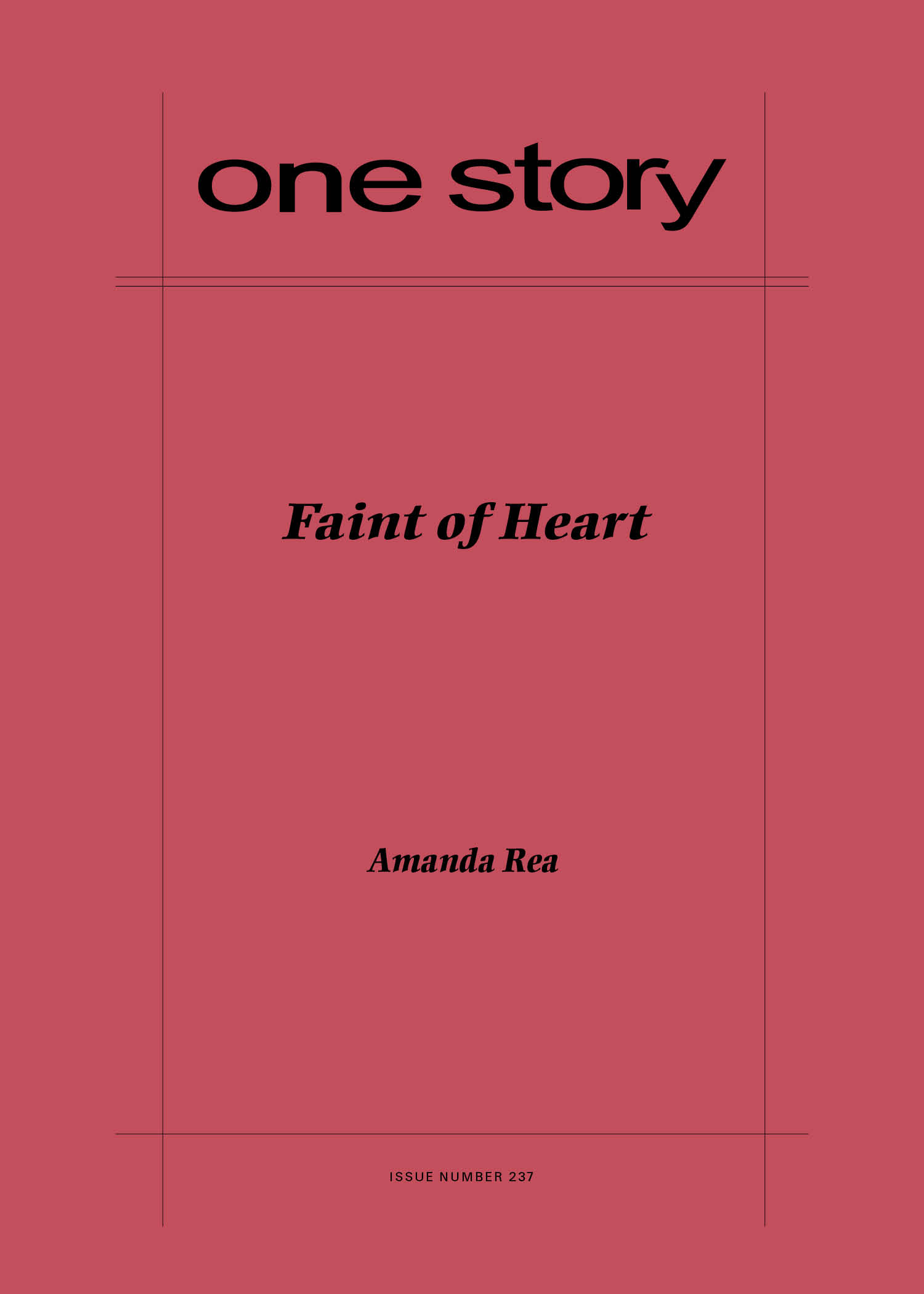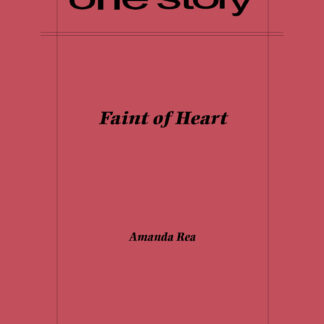
Faint of Heart
$2.50
65 in stock
Excerpt
That morning, Nora Stevens left a sink full of breakfast dishes and walked outside to investigate the barking of her father’s dog. It was an old dog, one that hadn’t mellowed with age, and many nights it had kept them awake barking at a strip of tin flapping against the barn, or coyotes singing in the distance, their voices carried on the wind. It was a terrible summer for wind, even for southern Colorado. It wailed down the river bottom and blew grit into everybody’s eyes. It made hairdos impossible. Many women Nora’s age still wore bouffants, and she planned to wear one herself at her wedding to Ron Whitehead in the fall—a voluminous updo half-hidden by a shoulder-length veil. She’d planned it down to the last detail. Having reached the age of twenty-six unclaimed, and having grown up without a mother to instruct her in beauty and manners, she felt a certain duty to prove herself as a bride, to show Ron’s family she was as sweet and ordinary as any other girl he might’ve wed. In this campaign the wind had begun to feel like a sentient foe. It would rip the veil right out of her hair. It would howl around the church like wolves.
Amanda Rea
Amanda Rea’s stories have appeared in Harper’s, Freeman’s, Electric Literature, The Missouri Review, The Kenyon Review, The Sun, Indiana Review, Iowa Review, and elsewhere. She is recipient of a Rona Jaffe Foundation Writers Award in Fiction, and a Pushcart Prize. She lives in Denver, where she teaches at Lighthouse Writers Workshop.
Patrick Ryan on “Faint of Heart”
At the beginning of our new issue, “Faint of Heart” by Amanda Rea, a young woman named Nora finds a child cowering, nearly naked, in a doghouse. Something horrific has happened, something unthinkable—but, as we soon find out, things could have been much worse.
The events that give this story its dark side have all occurred before the first sentence. What follows is a life lived in the wake of those events, and that life is Nora’s. Peripheral to a crime that’s now in the past, she carries on, works to pay the bills, searches for love, and settles into middle age. And then, one quiet afternoon, the past does what it does best: rears its head.
I was surprised when I first read “Faint of Heart” by the deft handling of the movement of time, and by the seemingly obvious and yet complicated layers of emotion that echo from a single event as years unfold. I was surprised even more to find out, in our Q&A, that this story was inspired by something Amanda Rea experienced firsthand. She’s a show-stoppingly good emerging writer, and we’re excited to be publishing her in One Story.
Q&A by Patrick Ryan
- PR: How did the idea for this story first come to you?
- AR: When I was a kid, my parents told a story about someone trying to hang my little brother and me. Neither of us had any memory of it, as we were toddlers when it happened, but apparently an older boy (maybe two of them) lured us into the woods and tried to hang us with a noose. Somebody found us before we were hurt, but it was such a ghastly story that I became a little obsessed with it. Had the boy intended to kill us? What would possess him to do such a thing? How had my parents reacted? Nobody could give me any satisfying answers, as is often the case with family lore. Later, when I was sixteen and working at the local Safeway, the culprit came into the store. He was an adult by then, and though I knew who he was, he didn’t recognize me. I bagged his groceries and we exchanged polite smiles, but I kept thinking, this person tried to end my life. He seemed like a perfectly nice man, and to my knowledge, he is. The story arose from that discrepancy.
- PR: That’s jaw-dropping! And it feeds right into my next question. In “Faint of Heart,” there’s a crime at the beginning, but that part of the story isn’t a whodunit, because everyone—including the reader—knows who the abductor is. In fact, the horrific part of the crime is over by the time Nora, your main character, finds the girl when the story opens. When I first read “Faint of Heart” I thought maybe it was going to become a “why-dunit” (a clunky term I just invented). I thought maybe we were going to get the reasoning or motivation behind LeDivic’s actions. But we never do. Given the fact that this is based on a real event, did you ever consider putting his reasoning or his motivation into the story?
- AR: If there’s a wrong way to write this story, I tried it. And that includes an early draft from LeDivic’s perspective, following him through every step of the crime and his attempted escape—a total “why-done-it.” While this approach might’ve been illuminating for me, it resulted in a story that was bleak and claustrophobic, relying too heavily on gruesome details, like an episode of Law & Order: Special Victims Unit. Ultimately I found that excavating LeDivic’s motivations (such as they are) drained the life from the story. It was the inexplicable nature of the event that interested me.
- PR: How different is the final version of “Faint of Heart” from the story you first envisioned? Were there any big surprises waiting for you along the way?
- AR: The final version might retain a line or two from previous drafts, but it mostly abandons them. I’m never able to envision a story at the outset—it’s more like groping through a dark room, trying to find a light switch. In this case, Nora was the light switch. I’d assumed my narrator would be one of those involved in the crime (LeDivic, one of the children, their parents) but it wasn’t until I slipped into the perspective of an outside observer, someone through whom the story could be filtered, that it began to accumulate meaning.
- PR: There’s an enormous jump forward in time two-thirds of the way into the story. I love that kind of thing in fiction (when it’s handled well—as it is here). It demands that the writer decide what to say about the intervening time—in this case, eighteen years. Were you tempted to tell us more about Nora’s life from 1969 to 1987 than you do?
- AR: The honest answer is no. It didn’t occur to me until late in the revision process, and then I tried to add a summary of Nora’s romantic life during those years. This seemed like the most relevant gap in her backstory, but while it was fun to write, it felt unnecessary. I like stories to have empty spaces, especially a story set in such an empty, tumbleweed landscape. If we know Nora at all—and I hope we do—we can intuit what happened during those years, what kinds of men came calling, and how she responded to them.
- PR: Let’s come back to LeDivic for a moment. As you wrote about him years after his crime, now a father and a seemingly upright citizen, did you feel sympathy for him? And do you think Nora does, on some unconscious level?
- AR: I absolutely feel sympathy for LeDivic. His mental illness, as I imagine it, flickers on and off, so he’s white-knuckling it through life, always monitoring himself, never quite in sync with the people around him, laughing at the wrong times, plagued by strange impulses. I consider him heroic, despite what he’s done. I’m not sure Nora can get there, though—she feels too humiliated by their interaction, and the way it upends her beliefs.
- PR: Nora is one of my favorite characters I’ve encountered in quite a while. Have you written about her elsewhere? Or do you have any plans to write about her again in the future?
- AR: Thank you. I haven’t written about Nora again, though some of her traits have popped up elsewhere in my fiction. I seem preoccupied with characters who refuse to embrace life, but instead try to withstand it in some futile, ridiculous way. Nora is good-hearted, but she’s also nosey, narrow, withholding, and stubborn—often to her own detriment. I think most of us know someone like that and, in our worst moments, are someone like that.
- PR: Finish this sentence in just one word—the word you think best captures it: “This story is about __________.”?
- AR: Fear.
- PR: What are you working on now?
- AR: A novel, a couple of stories, and an essay or two.
- PR: What is the best bit of advice about writing you have ever received?
- AR: Grace Paley said not to be afraid of “writing small.” I take that to mean small stories, small moments, a small amount of pages, small blocks of time in which to write. Even a doorstopper novel is a made up of these small units of stillness and attention.
